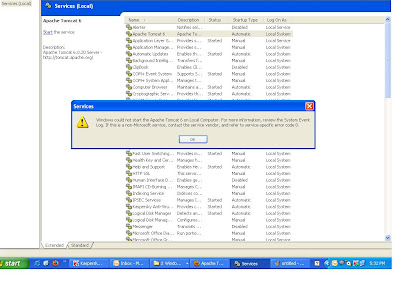How to Install Cygwin 2.7 on Windows........
Step by Step Installation
of Cygwin on Windows
Hi guys,
Here I am writing the steps for installing the cygwin on windows follow the steps :
1. Download setup.exe from www.cygwin.com.
2. Run the setup.exe of cygwin.
3. Click on next button
4. Select the option install form local directory and click
next button.
5. Select the path where you want to install.
11. Now we need to set the Enviroment variable.
(i) Right click My Computer, Properties, Advanced, Environment
Variables
Click the "New" button to add a new entry to System variables:
variable name is CYGWIN
variable value is ntsec tty
Select the Path variable and click the "Edit" button:Click the "New" button to add a new entry to System variables:
variable name is CYGWIN
variable value is ntsec tty
(ii) Right click My Computer, Properties, Advanced, Environment Variables
append ;c:\cygwin\bin to the end of the existing variable string.
With recent releases of cygwin, there are many permission
problems.
Execute these 6 commands on cygwin terminal:
chmod u+w /etc/passwd
chmod +r /etc/group
chmod u+w /etc/group
chmod 755 /var
touch /var/log/sshd.log
chmod 664 /var/log/sshd.log
12. ssh-host-config (manuall answer Yes to questions except)
If the script says "This script plans to use cyg_server, Do you want to use to different name? Answer no.
13. Reboot the computer and run the this cyglsa-config
14. While you are still in the (black) cygwin screen, start the sshd service, type
net start sshd
or
cygrunsrv --start sshd
If the service fails to start, try (thanks to Ross Beveridge of HP for this tip)
chown system /etc/ssh*
chown system /var/empty or chown sshd_server /var/empty
net start sshd
If you get "ssh-exchange-identification: Connectiion closed by remote host" error.
edit the file /etc/hosts.allow and add these two lines
ALL: 127.0.0.1/32 : allow
ALL: [::1]/128: allow
(i) Make sure every Windows user has a password set, if not,
go to Control Panel....User Accounts and create a password.
(ii) Make sure every Windows user has done the following at least once:
Login in as the Windows user, pop a console command screen by clicking Start...Run....cmd
15. Pop a cygwin window, harmonize Windows user information with cygwin, otherwise they cannot login
mkpasswd -cl > /etc/passwd
mkgroup --local > /etc/group
16. If your XP logs on to a domain, you most likely have to manually edit /etc/group.
If your local account name is the same as the domain name, then you would need to use Windows's User admin function to
rename the local account from name to name.local
Then rebuild the passwd and group files as shown above, then edit the /etc/group file as shown above. Open firewall's TCP port 22
If your XP logs on to a domain, you may want to edit /etc/passwd to replace /home/username by //unc_server/path_to_home
17. CHECK FOR FUNCTIONALITY OF CYGWIN:
Test to see if sshd is working, pop a cygwin window (note: the command below is case sensitive)
whoami
ssh localhost
or
ssh -vvv localhost
or
ssh "$USERNAME@127.0.0.1"
Thanks'
Have a nice day.













Comments
Post a Comment